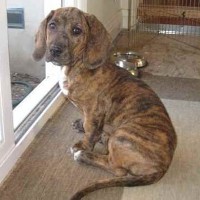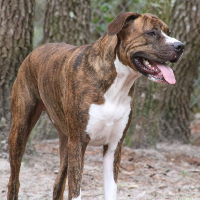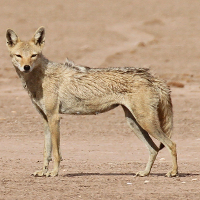Appearance of the Cursset
|
| As the Cursset is a hybrid of the Black Mouth Cur and the Basset Hound, there is currently no breed standard. Each dog can inherit the dominant traits of either parent breed. In general, the Cursset has a long, low body, similar to the Basset Hound. The coat can range from black and brown to fawn. Its long muzzle and floppy ears can be attributed to the Basset Hound's appearance. The eyes are generally dark brown, while the nose is black. Its long, thin tail is usually carried parallel to its body. Its expression resembles the sad look of a puppy. Its legs are strong and large. |
Temperament of the Cursset
|
| While the Cursset is described as a fierce, relentless guard dog that will protect the family from danger, it is also a gentle, loving and intelligent dog. He is known to be even-tempered and will only become cautious if he senses the potential for a volatile environment. His adorable personality makes him a wonderful pet. He will get on very well with children who understand boundaries. Early training and socialization are highly recommended to avoid any miscommunication with your dog. Its low, deep voice is often used to scare off intruders and protect its family. This protective dog can be wary of strangers and may require early intervention to differentiate between friendly and unwanted strangers. Its inquisitive nature makes it easy to train with positive reinforcement. The Cursset is known to have high energy levels and will require more exercise than average on a daily basis. |
Needs and activities of the Cursset
|
| Your Cursset is known to have a high energy threshold and will require intense play to meet daily exercise requirements. He will benefit from various activities such as running, swimming, pulling, fetching and staying active throughout the day. About 2 brisk walks a day are recommended to maintain his active lifestyle. It's recommended to provide your active Cursset with at least 45 to 50 minutes of exercise a day. Apartment living is strongly discouraged, as he won't have the ability to stay active and is likely to engage in destructive behavior. Your lively dog would benefit from living in a rural home with a spacious yard or field in a warm climate. |
Maintenance of the Cursset
|
| The Cursset is not considered a hypoallergenic breed and will shed moderately. Excessive dead hair can be maintained if brushed for 10 minutes a day with a fairly smooth brush. In shedding season, a pin brush will also do the trick. Baths should be given no earlier than every 6 to 8 weeks to avoid overproduction of oils in the skin. The ears need special attention because of their softness. Wipe and clean ears weekly. Teeth should be brushed regularly to prevent tartar build-up. There are no significant odors or drooling problems associated with Cursset. Nails should be trimmed every 2 to 3 weeks to prevent proliferation, which can be harmful to your pet. |









 English (United Kingdom)
English (United Kingdom)